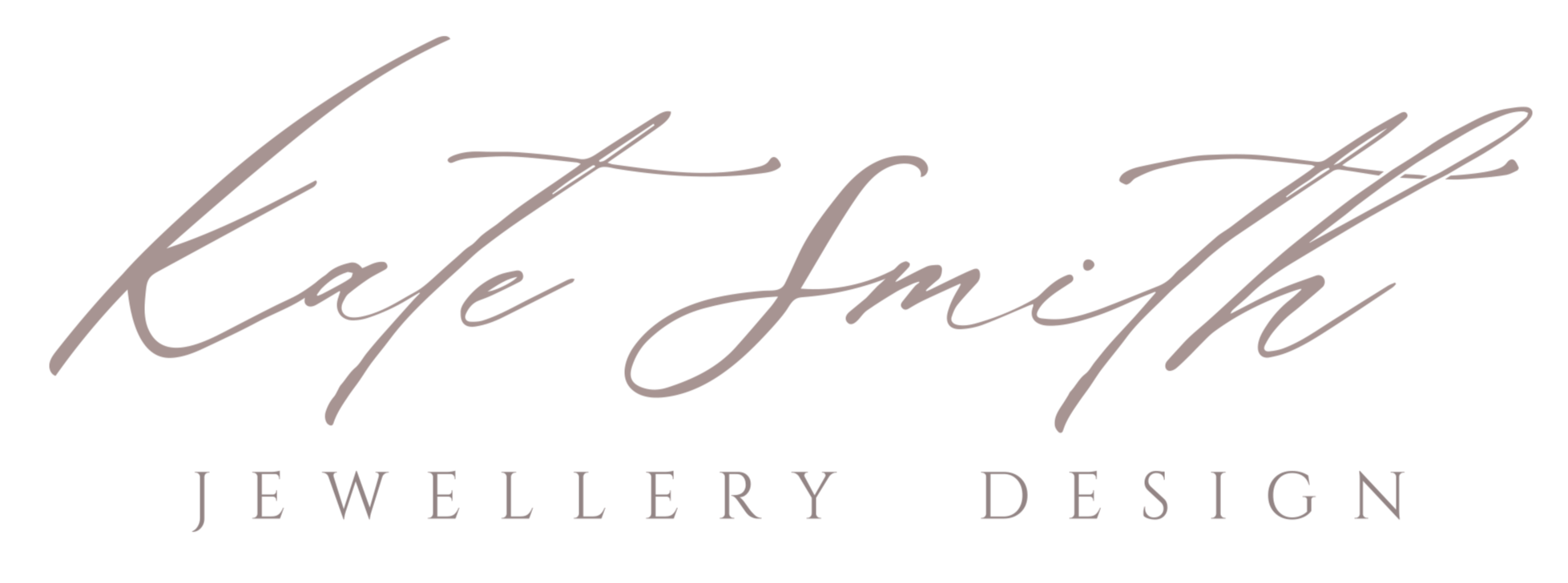
Gold and silver are just... gold and silver. Right?
Well, yes and no. There's a little more to it than that.
There are different kinds of gold and different considerations to weigh up when choosing which type of precious metal is right for your aesthetic, lifestyle, and budget.
Before overwhelm starts to kick in at the choices of precious metals out there, I'm here to walk you through them, so you can decide which is the best choice for YOU.
So let's get started!
Your guide to precious metals
Understanding gold - what's the difference between 9ct & 18ct?
The difference here is the gold content.
- 9ct gold contains 37.5% pure gold.
- 18ct gold contains 75% pure gold.
The remainder is an alloy of different metals, which can include copper, zinc, palladium, or platinum.
What they are and how much depends on the colour of gold desired. For example, white gold may include silver, platinum and palladium (the 'whiter' metals) whereas rose gold has a higher content of copper, to give it the desired colour.
- 18ct gold is denser than 9ct gold, so the same ring will feel heavier in 18ct gold.
- 18ct gold is more durable, whereas 9ct gold is harder.
Which type of gold is best: 9ct or 18ct?
A good way to understand the difference is to compare a sheet of glass (representing the 9ct) with plastic (representing the 18ct).
- Glass (9ct) is the harder material, but more brittle.
- On the other hand, plastic (18ct) is a softer material, but it is more durable if pressure is applied.
So which gold is more suitable for jewellery?
Best for everyday wear
18ct gold is more durable and is ultimately the best choice for items that are being worn all the time, i.e. engagement and wedding rings.
Best on a budget
However, 9ct gold is also fine for rings! We make lots of rings in 9ct - and it may also be the more desirable option if you are on a tighter budget, as 18ct is more expensive.
Items such as necklaces, earrings and bracelets are less prone to heavy wear, so it matters less what carat you opt for.
How to decide
Making the right choice for you will include considering the look you prefer (see the image below to compare how they differ), what it's being made into and if you are working within a budget.
Different colours of gold
White Gold
Can I let you into a secret? White gold isn't actually white.
Most of the white gold metal used by jewellers has had a plating applied to enhance the finish and make it look 'whiter'.
This is common practice throughout the industry and rhodium plating is widely used - we offer it as an option too.
A rhodium plated white gold ring is shown (below right) and you can see how it compares to the 9ct and 18ct white gold rings in their 'natural' colour.
White gold colour differences
9ct white gold naturally has a slight yellow tone to it and 18ct white gold can appear quite grey.
Some prefer it in its natural state, but lots of people favour the look that rhodium plating gives, as it brightens up the look of gold jewellery.
It is a plating, so over time will wear and most likely need re-plating. We're talking years, not months, but some people don't want to be bothered with this.

Rose gold (sometimes referred to as red gold)
9ct rose gold has a more intense 'rose' look to it than its 18ct counterpart, which is a lighter colour.
If you are choosing rose gold for a surprise engagement ring, I'd encourage you to be sure that the wearer really loves rose gold.
Firstly, it is a very specific look that isn't necessarily to everyone's taste.
Secondly, whilst rose gold is beautiful, it works better with some skin tones more than others. I highly recommend trying on both 9ct and 18ct rose gold to compare the two.
Rose gold looks wonderful with pink gemstones, such as sapphires, pink diamonds and morganite.
Hallmark to look for in any colour of gold: 375 (9ct) or 750 (18ct)
Platinum
Traditionally viewed as the most desirable of precious metals, platinum is very durable and hard wearing. It is a dense metal and when used to make a chunkier ring, you will definitely know you're wearing it! Platinum looks stunning with diamonds, but also gorgeous with blue gemstones.
Hallmark to look for: 950 - in a little house shaped rectangle.
Silver
It may not have been the 'traditional' choice for an engagement ring historically, but we absolutely LOVE how amazing sterling silver and diamonds look together when used in jewellery. Plus, we're all about you doing things your way.
Pure silver's 'whiteness' is particularly attractive and looks amazing with diamonds and blue gemstones (sapphires, aquamarines, topaz).
If your budget isn't vast and you're looking at the more affordable end of the precious metal prices, then this is an ideal choice - our silver engagement rings start from just £175
Considerations for silver jewellery
A few things to bear in mind if you're opting for a silver ring over gold or platinum...
It needs a little more love
Silver is the softer of the metals we work in. This doesn't mean it isn't durable, but it does mean more care would need to be taken of it over the years. It's wise not to wear a silver ring next to a ring with a much higher durability (e.g. platinum) as the harder metal may wear away at the silver over time.
However, it does depend on the styles of the rings involved.
Works better with smaller gems
Envisioning a large diamond taking centre stage in your ring? Then silver may not be the best choice for the setting as it's important to have a really robust setting for an especially valuable gemstone.
White gold or platinum might be a wiser choice, long term.
Tarnishing is more common, but fixable
Silver does not like chlorine as it can tarnish it heavily - so swimming is a no no in silver. Care needs to be taken so that silver doesn't come into contact with other chemicals as well, such as cleaning products and strong perfumes.
General tarnishing of silver can naturally happen over time. This is normal and something that can be removed. We offer a free refinishing service on all of our jewellery over its lifetime of wear.
Hallmark to look for on silver jewellery: 925
The '925' hallmark on jewellery tells you that it's made of sterling silver.
The number refers to the fact the quantity of pure sterling silver is 92.5 per cent. Usually, the remaining 7.25 per cent of metal is copper, to add strength and durability to the silver.
For more information on what hallmarking is and how to decipher the tiny symbols inside your jewellery, read our article on jewellery hallmarking.

Jeweller. Mum. Businesswoman. Wife.
Hi - I'm Kate.
A tea-drinking, ice-skating, book-writing, photograph-taking designer who would love to create your dream piece of jewellery.
From my workshop in the heart of Birmingham's Jewellery Quarter, I share regular jewellery care tips, tricks, latest makes and pieces that inspire. Want in?
Just pop your email in the box below.
Let's keep in touch!
Join my mailing list and get the VIP treatment.




























